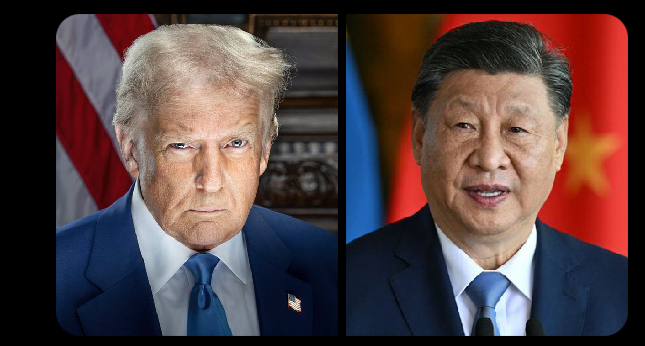China Escalates Tariffs On U.S. Goods To 125% As Trade Tensions Deepen.
In a dramatic escalation of the ongoing trade dispute with the United States, China has announced it will increase tariffs on all U.S. imports from 84% to 125%, effective from tomorrow, 12 April 2025. The move marks a significant step towards what analysts are calling the “decoupling” of the world’s two largest economies, raising fears of broader economic fallout across global markets.

The Chinese Finance Ministry described the tariff hike as a direct response to recent U.S. policies, accusing Washington of undermining fair trade practices. “The U.S. actions have left us no choice but to protect our economic interests,” a ministry spokesperson stated, adding that further increases may be considered if tensions persist. The announcement follows a series of tit-for-tat measures, with the U.S. recently raising its own tariffs on Chinese goods to unprecedented levels.
A Step Towards Economic Decoupling
The term “decoupling” – the deliberate unwinding of economic ties between the U.S. and China – has gained traction in recent months.
For decades, the two nations have been deeply interconnected, with China serving as a manufacturing powerhouse and the U.S. as a key consumer market. However, growing geopolitical rivalries and trade disputes have pushed both sides towards greater self-reliance.
Analysts warn that this latest tariff increase could accelerate the process, disrupting supply chains and raising costs for consumers globally. “We’re witnessing the slow unravelling of a system that has defined global trade for years,” said Dr. Emily Chen, an economist at the London-based Institute for Global Trade. “Both sides are digging in, and the consequences will ripple far beyond their borders.”
The Origins of the U.S.-China Trade Saga
The roots of this economic saga trace back to the early 2000s, when China’s rapid industrial growth and entry into the World Trade Organization in 2001 transformed it into a global economic powerhouse. While this opened vast opportunities for trade, it also sparked concerns in the U.S. over job losses in manufacturing sectors, as companies shifted production to China to capitalise on lower costs.
Tensions simmered for years, but the trade war officially erupted in 2018 during the first term of then-U.S. President Donald Trump. Citing an unfair trade deficit and allegations of intellectual property theft, the U.S. imposed tariffs on billions of dollars’ worth of Chinese goods.
China retaliated with its own levies, targeting American agricultural products and other exports. The back-and-forth continued, with brief pauses for negotiations, including a partial “Phase One” trade deal in 2020.
However, the underlying issues – from market access to technology transfers – remained unresolved. The Biden administration, which took office in 2021, largely maintained the tariffs while adding new restrictions on Chinese technology firms. By 2025, the return of Trump to the White House reignited the conflict, with the U.S.
introducing sweeping tariffs aimed at reducing reliance on Chinese imports. China’s latest move to raise tariffs to 125% signals its unwillingness to back down.
Global Markets Brace for Impact
The announcement sent shockwaves through financial markets today, with share indices in London, Tokyo, and New York recording sharp declines. Businesses on both sides of the Pacific are now grappling with the prospect of higher costs and disrupted trade flows. British firms, particularly those reliant on trans-Pacific supply chains, are also feeling the strain. “This is a wake-up call for UK companies to diversify their sourcing,” said James Hargreaves, a trade consultant based in Manchester.
Consumers may soon face higher prices for everyday goods, from electronics to clothing, as companies pass on the costs of tariffs. Small businesses, already squeezed by inflation, are particularly vulnerable. “It’s a nightmare scenario,” said Sarah Lin, who runs a small import business in Birmingham. “We’re caught in the crossfire of a fight we didn’t start.”
A Path Forward?
Despite the rhetoric, both nations have left the door open to dialogue. China’s Commerce Ministry reiterated its willingness to negotiate, provided talks are based on “mutual respect.” Meanwhile, U.S. officials have indicated that exemptions could be considered for certain goods if China takes steps to address trade imbalances.
However, with both sides entrenched, a resolution seems distant. For now, the world watches as the U.S. and China edge closer to a new economic reality – one where interdependence gives way to rivalry, and the global economy braces for the fallout.


